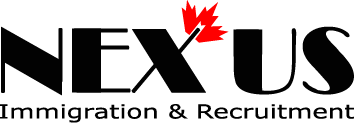
Quick overview of Commercial License in Alberta – Class 2
Want to obtain a Class 2 driver’s license in Alberta? Alberta’s geographical location and its cultural and economic activities make it not only a freight hub but also an important tourist destination outside of winter. The province includes world-famous national parks such as Jasper and Banff. The route connecting these two national parks passes near the Columbia Icefield in British Columbia, making it a particularly popular tourist destination. Compared to the arduous journey from Vancouver Airport in British Columbia, crossing dozens of bends and hundreds of turns through the Canadian Rockies, starting from Edmonton or Calgary airports in Alberta to Jasper or Banff National Parks offers a much flatter and smoother route with significantly fewer disruptions due to road conditions.
Furthermore, in response to rapid population growth, provincial and city governments are actively expanding public transportation systems and enhancing compulsory national education resources for local residents. For instance, in the Greater Calgary area, post-COVID-19 in 2023, the transit authority rehired staff who had been laid off due to reduced services during the pandemic and additionally recruited over 700 people. In 2024, they plan to hire another 300 people, with an additional 50 to 100 people annually in subsequent years to fill the gaps left by retiring staff. Moreover, school districts across the province routinely recruit school bus drivers to accommodate the growing population.
To meet the demand for professional bus drivers and ensure the improvement of their professional skills, Alberta has dedicated the past decade to a series of reforms targeted at professional driving training. It is also the first province in Canada to regulate the Class 2 professional bus driving license with a Mandatory Entry-Level Training (MELT) requirement, elevating the quality of professional bus drivers across the nation. If you also wish to join the ranks of professional bus drivers, here are the steps you can start with:
1. Funding:
In Alberta, the provincial government has set a cap of 5,000 CAD for the full Class 2 MELT (Mandatory Entry-Level Training) fee. As Alberta is the only province with a Class 2 MELT system, immigrants with Class 1 & Class 2 licenses from other provinces who do not meet the minimum driving experience may be required to undergo MELT training based on their license qualifications and records.
- DBTW Training Project: Funded by federal Employment Insurance (EI) funds, in Alberta, this has been repackaged into the Drive Back To Work program. The subsidy amount varies based on the recipient’s EI contributions and insured amount. Training cohorts typically start every 2-3 months and have limited slots, so timely registration is crucial.
- Other Public Sector Subsidies: Due to high turnover among school bus drivers in various school districts, beginning 2023, Alberta’s provincial authorities of transportation, commerce, and education have collaborated on initiatives to address school bus driver shortages. For more details, consult the local school district or education board.
- Private Sector Subsidy Programs: These are often from companies offering subsidies for internal job transfers or promotions, or for new hires willing to sign 1-4 year contracts. These subsidies usually require a commitment to a certain period of service or accept a lower initial salary than usual, which adjusts after gaining some experience.
- Self-funded: For new immigrants or others who cannot obtain funding but are determined to obtain the AB Class 2 license, the most common reason is not securing a spot in the DBTW due to high demand.
Please note that the training amount mentioned is limited to the MELT course fees. Costs for retraining and retesting, if one failed the road test, are not covered under this cap.
2. MELT (Mandatory Entry-Level Training):
This training is mandatory and includes academic knowledge in the classroom and practical driving experience on the road. It is designed to provide you with a solid foundation for safely operating a professional coupling vehicle. The course structure is as follows:
- Classroom (Lecture): (Total 26.00 hours)
- 19.50 hours of general education
- 6.50 hours of air brake training
- Textbook:
- Approximately 330~334 pages of presentation notes (based on the standard textbook released in September 2022)
- Practical (in-parkade): (Total 11.50 hours)
- 9.50 hours: Mainly pre-trip inspections
- 2 hours: Inspection and operation of air brakes
- On-The-Road (OTR): (Total 24.5 hours)
- 39 hours: Mainly on-the-road driving, with extra instruction pertaining to school bus operation specific
The total duration of the course is 62 hours. Driving schools can directly use the standard textbook handouts provided by the provincial government or compile their own textbooks, but they must fully include all topics and depth of knowledge covered in the provincial government’s standard textbook.
Furthermore, please note that if you plan to operate vehicles carrying passengers who are standing or not using seat belts, this is not covered within the MELT training scope. Additional training and specialized certification may be required. This professional certification is usually administrated by regional transit authorities. For more details, please contact your local transit authority (e.g., Calgary Transit, Edmonton Transit Service, etc.).
3. Computer Based Knowledge Test:
The content for the written test is typically derived from the provincial government’s published Commercial Driver’s Guide – Open Government Program and the School Bus Driver Improvement Program – School Bus Operator’s Manual. Reading these two manuals is usually sufficient to prepare for the test. However, it is still recommended to refer to the province-issued curriculum handouts. Yes, that includes the extensive 334-page PowerPoint presentation: Commercial bus and school bus driver training Class 2-S : curriculum presentation.
Course outline is shown below:
Course Modules
Module 1: Employment in the Busing Industry
Module 2: Documents, Paperwork, and Regulatory Requirements
Module 3: Hours of Service Compliance
Module 4: Vehicle Component and Inspection Activities
Module 5: Basic Driving Techniques
Module 6: Professional Driving Habits
Module 7: Off-Road Tasks and Manoeuvres
Module 8: Passenger Management, Loading, Unloading, and Transporting Passengers
Module 9: Handling Emergencies
The examination locations are at various Registry Agencies. For more details, you can search on the following website: https://www.alberta.ca/lookup/find-a-registry-agent.aspx
(TRUST ME, if you’re considering Class 2, it’s strongly recommended to take the School Bus Endorsement S at the same time. This way, you only need to put in the effort once, and it will benefit you for a lifetime!)
4. Road Test:
Exam Duration: 2 hours and (please ensure you arrive at least 30 minutes before the exam time for registration and verification of documents).
Exam Subjects:
- Pre-trip Inspection (including Endo Q: Air Brake Practical Exam)
(Expected duration: 30 minutes for vehicle inspection + 15 minutes for air brake system check) - Road Driving (including reversing, and possibly integrated with the pre-trip inspection)
(Typically lasts 45 to 80 minutes, sometimes with expressways used in place of highways)
Vehicle Specification Restrictions:
- Large passenger buses with seating capacities exceeding 24 passengers
- Equipped with a certified air brake system
- A school bus with proper marking and equipment (for Endo S road test)
Cost: CAD 167
How to Apply: In-person at a provincial Registry Agency with your MELT completion certificate and written exam pass certificate, or make an appointment online (https://scheduler.itialb4dmv.com/schAlberta).
5. Medical Exam:
You will undergo a medical examination to ensure you are fit to drive, covering your vision, hearing, and overall health. Additionally, it will clearly determine whether you meet the physical health requirements of NAFTA (North American Free Trade Agreement) member countries.
The main examination items are as follows:
- Vision: Whether you have color blindness or if it is mandatory to wear glasses while driving
- Hearing Test
- Cardiovascular and Cerebrovascular Systems
- Nervous System: For example, whether you have epilepsy, neurological reactions, or other diseases that require long-term medication
- Respiratory System: For example, whether you have asthma or other diseases that require long-term medication
- Metabolic System: For example, whether you have diabetes or other diseases that require long-term medication
- Mental Illness: For example, whether you have multiple personalities, depression, bipolar disorder, or other diseases that require long-term medication
- Other Diseases: For example, whether you have a drug addiction or may be required to undergo a urine test
Those who pass the road test must complete and pass a health check within a specified period at a designated medical facility in Alberta. Since Class 2 driver’s licenses are submitted to relevant border agencies for screening, if you have specific physical or mental health conditions, you may be restricted from practicing across borders, which could affect your employment options. Since Alberta’s Class 2 license also covers Class 3 (commercial heavy trucks) and due to privacy protections for personal medical records, it is not possible to compel job applicants or existing employees to disclose all private medical information. When applying for freight jobs with an AB Class 2 license, some freight companies may use the requirement of obtaining a FAST (North) card as an initial screening tool.
Additionally, to operate Canadian-registered commercial vehicles in the United States, you must pass additional drug screening tests conducted by the U.S. Department of Transportation’s Federal Motor Carrier Safety Administration (FMCSA). The basic substances tested include:
- Codeine/Morphine
- Marijuana Metabolites
- Phencyclidine (PCP)
- Cocaine Metabolites
- Amphetamines/MAMP
- MDMA/MDA
- MDEA/HYM
- Oxycodone/OXYM
- 6-Acetylmorphine
(If you are taking medications for treating flu symptoms or having recently undergone major emergency trauma treatment, please inform the attending physician or nurse in advance to confirm if it is suitable to proceed with the using sampling. This is to avoid any unnecessary misunderstandings.)
Follow these steps, and you’ll be on your way to a rewarding career in bus driving!







